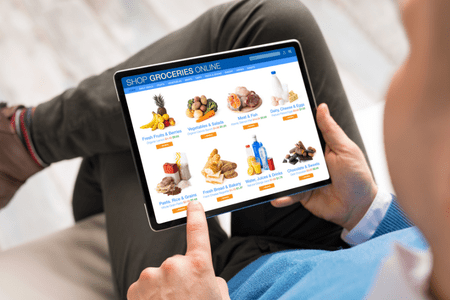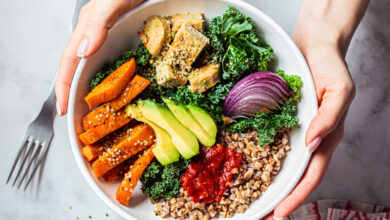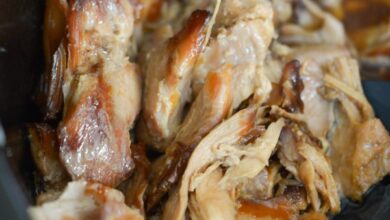1. Eggs
As previously mentioned, one egg usually costs under 20¢ (in my area, at least!). It’s cheap and packed with nutrition!
Meal Options: Scrambled, Hard-boiled, Sunny Side Up, Poached, Over Easy, Omelette, Can be eaten with bread (Panini, Toast & Eggs), Veggies
2. Ramen
Ramen is as cheap as it gets, but not very nutritional when served by itself.
Meal Options: Served as is, Served with added ingredients such as seasonings, meat, cheese, eggs
3. Hot dogs
Hot dog sausage links can be eaten as is. However, with a hotdog bun, it makes a full meal!
Meal Options: Served with a hotdog bun, eaten as is, or with veggies

4. Pasta
There are so many different pasta options, all of which are cheap.
Meal Options: Noodles, Meatless Spaghetti Marinara, Meatless Fettucine Alfredo, Pasta Salad, Pasta Casserole, Mac & Cheese
5. Pasta Sauce
This is to pair with the pasta. You can choose either marinara or alfredo.
Meal Options: Marinara Pasta, Alfredo Pasta
6. Flour
Flour is versatile and can be used to make so many different foods.
Meal Options: Bread, flatbreads, wraps, dumplings, biscuits, pies, pastries
7. Oats
Oats is cheap and can be used to prep easy breakfasts. It can also be ground into Oats Flour (or you can just purchase Oats Flour separately).
Meal Options: Overnight Oats, Oatmeal bars, Oats Wraps (from the Oats Flour)

8. Bread
A loaf of bread can cost about one dollar (in my area), and can yield many sandwiches!
Meal Options: Grilled Cheese Sandwich, Egg Panini, Toast, Peanut Butter Sandwich
9. Peanut Butter
This is great to make sandwiches, or to have with apple slices.
Meal Options: Peanut Butter Sandwich
10. Cheese Block
You get more for your money when you buy a block of cheese instead of shredded, or sliced cheese! I usually buy a block of cheddar cheese and use thin slices for sandwiches, and shred some for casseroles.
Meal Options: Grilled Cheese Sandwich, Casseroles, Cheesy Ramen
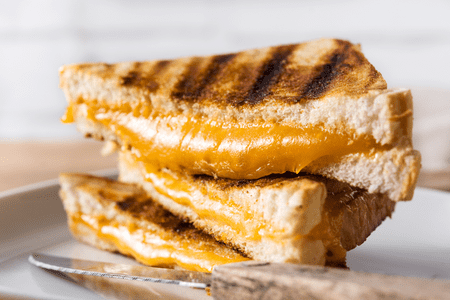
11. Muffin / Pancake Mix
This is quick and easy to make.
Meal Options: Muffins, Pancakes, Waffles
12. Popcorn
Popcorn is a cheap, but healthy snack. This is popular in our household!
13. Rice
Rice is a staple that can be used for so many meals!
Meal Options: Rice and beans, Fried Rice, Gumbo
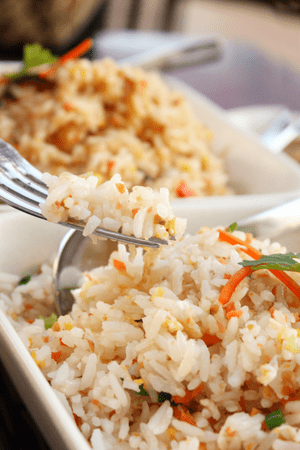
14. Beans
Dried beans are cheaper, but go ahead and grab canned beans if you prefer!
Meal options: Red beans and Rice, Black Eye Peas, Soups
15. Lentils
Lentils are healthy and cheap. It is rich in fiber and protein. Opt for the packaged dried lentils, as they are easy to make and will yield a few servings.
Meal Options: Lentil Soup, Lentils and Rice, Lentil Patties (for burgers), Lentils and Pasta
16. Ground Beef / Ground Chicken / Ground Turkey
When you’re looking to add protein to the mix, the cheapest option is ground meat. You can choose from ground beef, chicken or turkey. I even split one tray into two. For example, I sometimes use half in my pasta sauce, and half as wanton fillings.
Meal Options: Pasta, Casseroles, Burger Patties, Wantons, Dumplings, Wraps, Tacos, Can be served with veggies
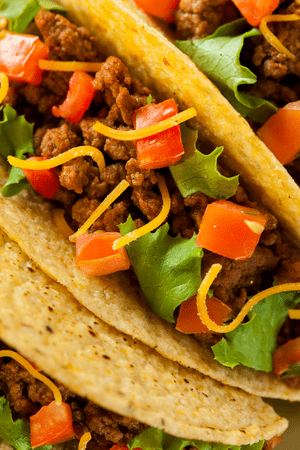
17. Canned Tuna / Sardines
Canned tuna, sardine or other preserved fish is another great option when you’re looking for cheap groceries.
Meal Options: Tuna Salad, Tuna Sandwich
18. Chicken
One tray of chicken can be split into two portions to be cooked in two different ways. Larger pieces can also be cut into smaller pieces.
Smaller pieces can be added to a curry, or shredded and added to a pasta salad. Larger drumsticks can be air-fried or baked.
Meal Options: Fried chicken, Baked chicken, Curry, Soups, Pasta, Chicken Salad, Sandwiches
19. Potatoes
Potatoes are one of the cheapest groceries, and is on my list every single week! It’s so versatile since it can be used to make so many different recipes!
Meal Options: Potato Salad, Fries, Baked Potatoes, Mashed Potatoes, Can be added to curries
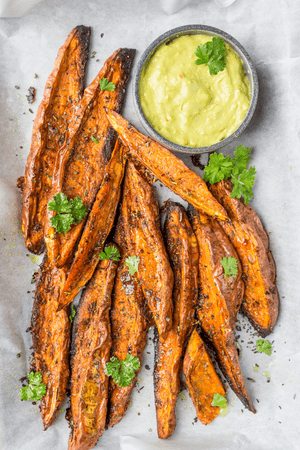
20. Sweet Potatoes
Sweet Potatoes is yet another healthy but cheap meal option.
Meal Options: Boiled Sweet Potatoes, Sweet Potato Mash, Fries, Wedges
21. Carrots
Carrots is healthy and pairs with almost anything!
Meal Options: Can be eaten as is, Roasted Carrots, Can be added to soups, Carrot rice
22. Lettuce
Lettuce, specifically iceberg lettuce is a must for sides and salads when you’re eating cheap.
Meal Options: Can be eaten as is, Salads, Wraps, Lettuce Boats
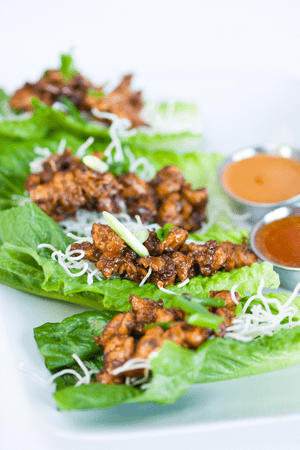
23. Cucumbers
Cucumbers is always on my weekly grocery list as a cheap food!
Meal Options: Can be eaten as it, Salads, Wraps
24. Frozen Fruits & Vegetables
Frozen fruits and vegetables are often cheaper than fresh produce, and will also last longer in the refrigerator.
Meal Options: Fruit Salads, Stir Fried Vegetables, Chow Mein, Roasted Vegetables
25. Apples
Apples are affordable, nutritious and make a great snack.
Meal Options: Can be eaten as is, Can be eaten with peanut butter, Apple pie
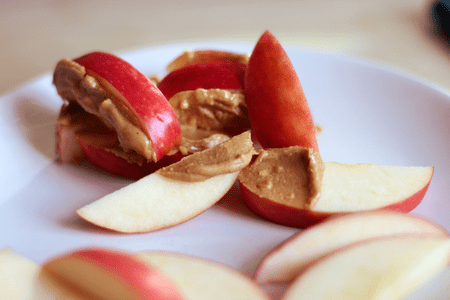
26. Bananas
Bananas are super healthy and affordable. They are versatile, as they can be eaten as a snack, and can also be added to some foods.
Meal Options: Can be eaten as a snack, Banana bread, Banana pancakes, banana muffins, sliced with pancakes or oatmeal
27. Corn
Corn can be bought in a can, or on the cob.
Meal Options: Grilled Corn, Corn on the cob, Soups
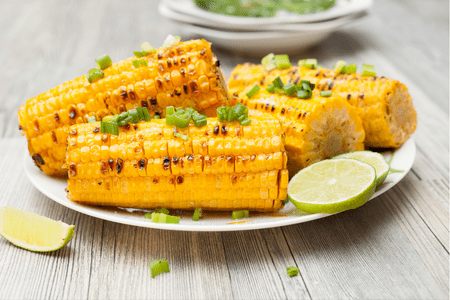
Sample Cheap Grocery List for a Month
Now that we’ve covered most of the cheapest food items that you’d find in the grocery store, here’s what a sample cheap grocery list might look like. You can add or take away from it based on your family’s needs and preferences!
All prices below were obtained from Walmart.
1 Crate of Large Eggs (18 count) – $3.22
Maruchan Ramen Noodle Soup (12 count) – $2.87
Gwaltney Hot Dogs Links (8 count) – $1.44
Great Value Hot Dog Buns (8 count) – $1.00
8 Packs of Spaghetti – $0.92 x 8 = $7.36
4 Cans of Pasta Sauce – $1.18 x 4 = $4.72
Great Value All Purpose Flour (5 lb) – $2.12
1 Great Value Bread Loaf (20 oz) – $1.00
1 Great Value Hamburger Buns (8 count) – $1.00
2 Great Value Cheddar Cheese Blocks (8 oz each) – $2.00 x 2 = $4.00
2 Boxes Great Value Pancake & Waffle Mix – $1.98 x 2 = $3.96
Great Value Long Grain Parboiled Rice (5 lbs) – $3.76
2 Packs Great Value Red Beans (16 oz each) – $1.28 x 2 = $2.56
2 Packs Conchita Lentils (12 oz each) – $1.18 x 2 = $2.36
2 Packs of Ground Beef (1 lb each) – $4.08 x 2 = $8.16
2 Packs of Ground Chicken (1 lb each) – $3.64 x 2 = $7.28
2 Packs of Chicken Drumsticks (2 lbs each) – $5.34 x 2 = $10.68
6 lbs Potatoes – $6.00
4 bunches of Bananas – $1.70 x 4 = $6.80
6 Sweet Corn on the Cob = $0.33 x 6 = $1.98
Total = $82.27
You’ll see that not every single item from our list of cheapest groceries made it to our sample grocery list. This is because you do not need to make every single recipe every month.
This list is a basic list that you can use as a template, so feel free to change out ingredients for other cheap options. You’ll also need to add staples such as salt, seasonings etc. You can even try growing your own herbs at home to save even more!
I usually split my grocery into 4 so that I can grocery every week, instead of a monthly basis. Items such as the breads are bought each week as needed, to prevent them from going bad.
Bonus Tips for Saving Money on Food
• Make a Budget & Stick to it
The first step to saving money on food is making a food budget, and sticking to it!
If you really, truly want to step up your money saving game, you’ve got to have an overall budget based on when you get paid. This accounts for all of your income and expenditure, and will give you some insight to how much money can be allocated towards your food budget for the month.
Of course, you’ll want to keep this as low as you possibly can, without compromising your health (or sanity)! Believe it or not, in the past, I’ve actually fed my family on $18 per week!
Once you’ve determined how much money you have for groceries for the month, divide this amount by 4 to get your weekly grocery budget, and start to plan your meals accordingly.

• Meal Plan & Cook at Home
Once you have set your weekly grocery budget, you can now plan your meals for the upcoming week. The goal is to choose cheap meals that are family favorites, and that are also easy to make!
The last thing you want is the feeling of overwhelm from having to cook a complicated meal, pushing you to spend a fortune on takeout.
Simplify the process as much as possible by planning meals that are quick and easy, doubling up on recipes so that you can utilize leftovers on some days, and meal prepping meats and vegetables ahead of time.
• Shop your Pantry & Make your Cheap Grocery List
Don’t forget to “shop your pantry” before you make your grocery list! Trust me, this prevents buying ingredients that you already have, which saves you a ton of money in the long run!
Meal planning and shopping your pantry often goes hand in hand, as you can actually plan meals based on ingredients that you already have. Always keep track of expiry dates so that EVERYTHING can be used!

• Use Delivery/Pick-up
Now that you’ve got your grocery list, it’s time to do your grocery shopping. One of my BIGGEST tips for saving money on groceries is utilizing delivery or pick up! Seriously, this will save you big time!
Not only does it prevent impulse purchases, but it simplifies grocery shopping so much! Click, click, click, and done!
• Use Cashback Apps
Doing your grocery shopping online makes it all the more easier to benefit from rebates and cash back apps. If you make your grocery purchase online through apps like Drop or Rakuten, you actually get some of the money you spent back!
This significantly reduces your grocery bill and can add up to hundreds of dollars at the end of the year. What would you do with a few extra hundreds each year? Pay off debt? Put it towards a vacay? Splurge on yourself?
Even better, after you use Drop to order your groceries, use the app to play games and complete short activities to earn even more money! An app that helps me save money AND make money?! YES, PLEASE!

• Practice Money Smarts when Shopping In-store
Now, if you don’t have a choice and you do need to do your grocery shopping in-store, please practice money smarts! Once you step foot in-store, you are already far more likely to overspend than when you buy your groceries online. But once you’re fully aware of this, and you practice self control, you can do this thing!
Here are some of the things you’ll want to remember.
Always eat before you go grocery shopping! You’re more likely to overload your cart when you’re shopping whilst hungry.
What else leads to overloaded shopping carts? Kids! Leave them home. Got a spouse who also loves to spend? Leave him/her at home too! I love ya lots, but bye!
While you’re at the store, remember to look higher up and lower down on shelves. The most expensive products are usually placed at eye-level. Also, skip name-brand products, and consider choosing canned fruits and vegetables to save more money!
Lastly, stick to your grocery list! Not an item more!

• Take Advantage of Sales & Coupons
Thrifty shoppers know how to meal plan and choose meals based on current sales and available coupons. Be sure to take advantage of these avenues to save even more money on your groceries!
• Buy in Bulk
Are there certain meals you see being consistently repeated on your meal plan, week after week? Perhaps you make these because they are family faves, and also affordable?
Well, you can save even more on these specific ingredients by buying these in bulk! Buying in bulk usually gets you a cheaper price per unit.
For example, spaghetti is a staple in my weekly meal plan. It’s one of the cheapest food on my list, and so, I make it every week. Each week I cook 2 – 3 packs of spaghetti to go with my jar of marinara sauce.
One box of spaghetti is around $0.92. Buying 3 per week costs me a little under $3.00. But since I already know I’m going to make spaghetti again the next week, I prefer buying spaghetti in bulk to save some money in the long run! Sometimes, I can get bigger boxes, or a bulk of 6 boxes, for a cheaper per unit price.
This isn’t always the case, so you should always do the calculations to make sure you’re getting the best deal when buying in bulk!

• Buy in Season
Planning your weekly meals based on ingredients that are in season can save you a lot of money in the long run. Be sure to use this to your advantage for all your produce for the upcoming week!
Additional Info on the Cheapest Food & Cheapest Groceries – FAQs
How can I eat for $20 a week?
Being able to eat for $20 a week requires serious planning and discipline. With a $20 budget, you’ll need to understand that eating out is not an option. And you’ll need to cook cheap and affordable meals at home.
Even the meals that you plan to cook will need to be dirt cheap struggle meals that can stretch your dollar. These include meals like Meatless Spaghetti Marinara and Baked Potatoes.
You’ll also need to stick to buying the cheapest groceries, and exercise frugal habits like splitting one tray of meat to add to 2 to 3 meals.
With proper planning, it is absolutely possible to east for $20 a week! Check out this $18/Week Meal Plan for inspiration!

How can I eat for $5?
$5 can probably cover your meals for one day if you cook one meal, that yields a few servings. If you know how to stretch your money, you can probably even get the meal to last two days!
Once you’re okay having the same leftovers for breakfast, lunch and dinner, eating for $5 is easy! More than likely, you’ll have to skip the meat, as $5 may only get you some vegetarian recipe options.
Options include potatoes (baked, mashed, fries), pasta recipes, meatless spaghetti marinara, grilled cheese sandwich, rice and beans, ramen and hot dogs. Just know that when you’re trying to survive on a $5 food budget, you’ll probably be eating half of a hot dog per meal!
What is the cheapest food to buy right now?
The cheapest food to buy right now include potatoes, pasta, beans, ramen, hot dogs, oats and eggs. Stick to cooking meals that use these cheapest ingredients to be able to save hundreds of dollars on your grocery bill!

What is the cheapest supermarket chain?
According to this recent article on Ramsey Solutions, the cheapest grocery store award goes to Aldi! Apparently, Aldi is able to keep their prices low because they’ve implemented major cost-cutting strategies, like having their customers pay a quarter to rent a shopping cart, or paying for the bags for their groceries.
According to the article, Aldi doesn’t paid employees for tasks like collecting the carts. By cutting such costs, they are able to pass on the savings to customers, in the form of lower prices.
What is the cheapest way to buy food?
Despite having many cheap grocery stores around, the cheapest way to buy food is online, with a scheduled pick-up or delivery.
Not only does buying online help you stick to your list and prevent impulse purchases, but it also makes it easier to utilize cash-back and rebates apps, like Drop, to get money back.
If you’re really serious about saving money on groceries, online grocery shopping is a must!
